TRANSPORT pages |
| 21 May 2016 : Céret jump to this page > > > | ||
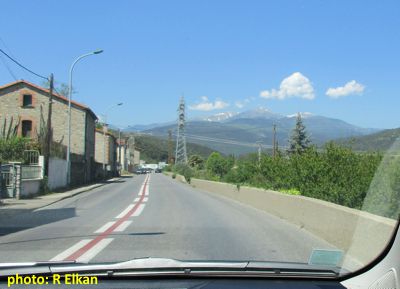 | Today we drove up into the Pyrénées, to the town of Céret (Say-ray) for the Fete des Cerises – the Cherry Festival. Cherries were the main draw, but there was the year's largest market there today, as well as the best collection, according to the guidebooks, of modern art in this modern artiest corner of La Belle France. Céret is a good sized little city with the usual maze of twisty narrow streets, all especially choked with cars today, and so we parked quite a ways away and walked in with a goodly crowd of like-minded folks. I confess a certain timidity when it comes to driving in France ...for about the first three minutes, and then I feel right at home. The roads are well marked. One comes to really love roundabouts, because there are thousands. French drivers are impatient and drive fast, but they're also civilized and stoic. It all works out. | |
 | We escaped with our treasures, miraculously found our car (we were scolded by the owner of the parking lot) and headed deeper up the mountains. | |
| 22 May 2016 : Sète jump to this page > > > | ||
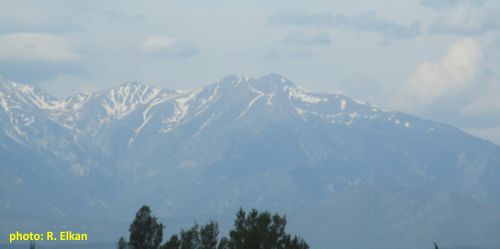 | I'm busy not being run over by speeding French drivers -- they love to bunch up and tailgate, but I can usually get in a hole between clumps. Rochelle is trying to get a decent photo of the snow on top of the Pyrénées, and at last, on an overpass, succeeds. We miss another access to the A9 and I'm still happy. The main thoroughfares skirt towns and are well marked, with few accesses and fewer crossings, so we zip along at 110 km/h (about 68mph.) Noteworthy: NO big cars. Even the SUVs are little big cars! | |
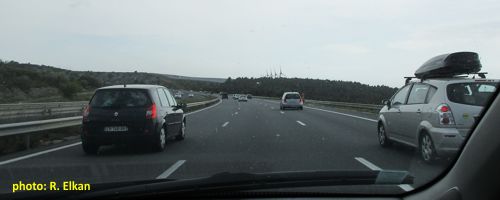 Northeast of Narbonne on the A9 | Outside Narbonne the traffic clumps up, another access to the A9 presents itself, and I climb on board. It's three lanes each way, travelling at 130 km/h, about 80mph, a little faster than either I or our little Yaris is comfortable going. There's a wicked crosswind, but nobody seems to mind. I have the sense that a lot of the traffic around me is determined to reach Paris before dark. Note the windspinners barely visible on the horizon. | |
| ||
| 25 May 2016 : Sète jump to this page > > > | ||
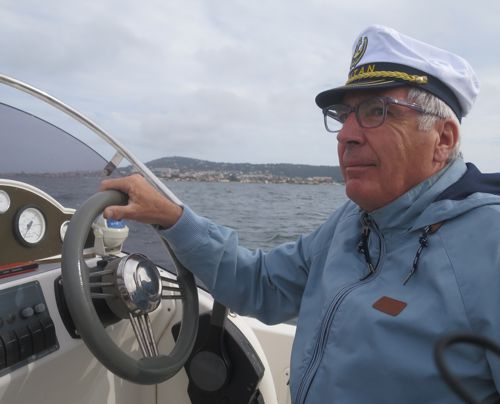 | After his day's work with the city is over, Patrick has offered to take us for a boat ride. Of course we accept. He takes us out into the Med, where's it's windy and bumpy, to see Sète from the ocean side. Then back through the canals – he shows us where he works, the ferry to Africa, where the cruise ships dock, the fisherman's village and harbor, then out under the bridges into the Étang de Thau, the 25 kilometer long lagoon to the south, where there are miles and miles of man-made oyster beds. He shows us where the Canal du Midi comes into the Étang, crosses it, and exits to the Mediterranean through the Royal Canal. I tell him we are going to go next to the Canal and ride around on a boat for a week. “Good decision!” he says. We hope so! | |
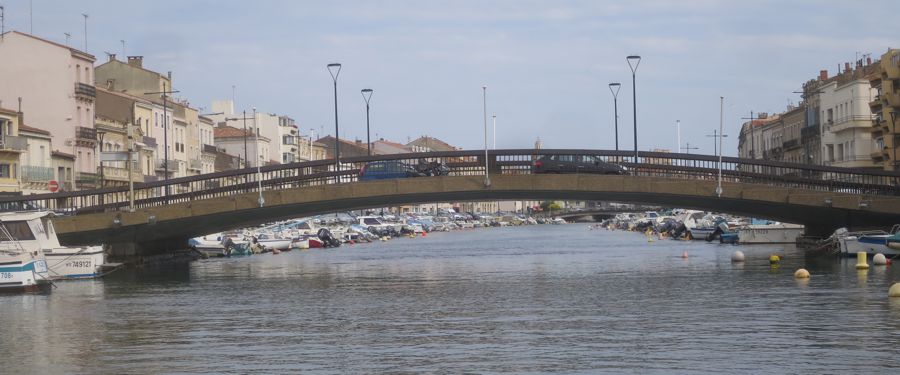 The Royal Canal | ||
 | Patrick is more willing to try to speak English, but when it comes down to complicated expressions, my French turns out to be better. I try to explain that I am a "recovering restaurateur" but the concept recovering is beyond him, and beyond my French to explain. Nevertheless, between the two of us we communicate well. He tells a lovely story about what happens in Cap de Agde, at the other end of the Étang: he and his wife rode down there in the boat one day, and saw a woman leading her (presumed) husband around on a leash, he on all fours. "Anything goes," says Patrick. "Anything!" He's fascinated, but disapproves. "We never do any of that," he insists. | |
| 26 May 2016 : Sète jump to this page > > > | ||
 The tricky joinery at the knee of the prow of a wooden boat | With a little time to spare, we walked out to the Museum de la Mer, a celebration of Sète as France's original port on the Mediterannean. From the late 17th Century, when the port was built, it has been the center for fishing the Med, as well as for boat building. The title of Most Important passed to Marseille during the 20th Century, but according to Patrick, Sète is still the most important fishing port. Boatbuilding was a major activity here into the 1950s, when plastic and metal supplanted wood. About then, the grandson of one of the great boatbuilders realized that theirs was an art getting ready to disappear ...and so made one-tenth scale models of the several forms of boats that he, his father, and his grandfather launched from Sète. | |
| 27 May 2016 : Canal du Midi jump to this page > > > | ||
 This is the Eastern section. The Grand Bief Long Pond) is 54 kilometers between the locks at Argens and the six-lock staircase at Foncérannes. | ||
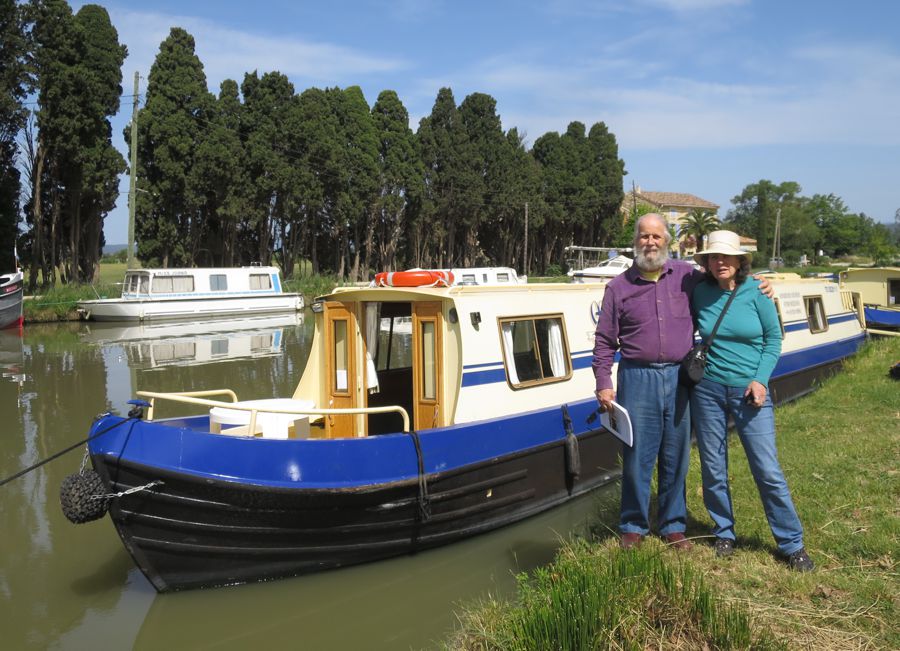 | ||
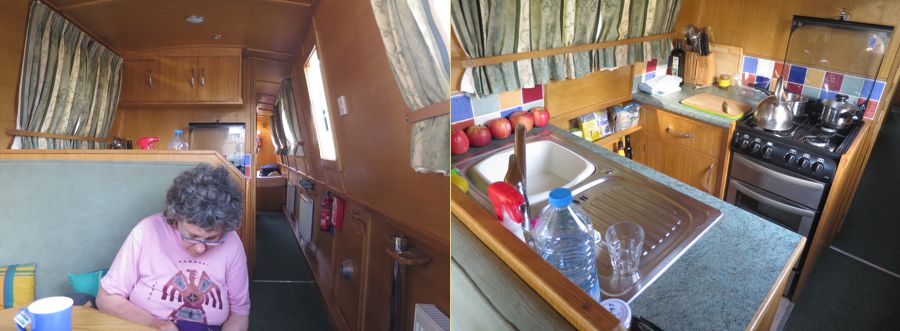 "By popular request (Hello, Sienna!)" : inside the boat | ||
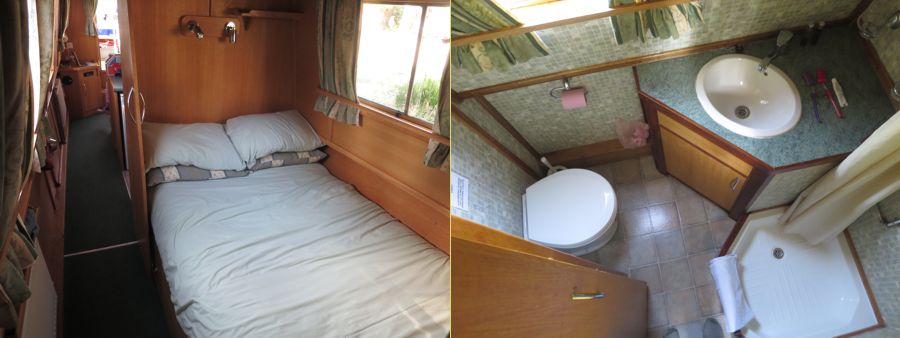 | ||
next group : Canal du Midi | ||
| other topics: Lunches Dinners Markets | ||
 |
updated 17 December 2020 Caspar Time site software and photographs by the Caspar Institute except as noted this site generated with 100% recycled electrons! send website feedback to the CI webster |